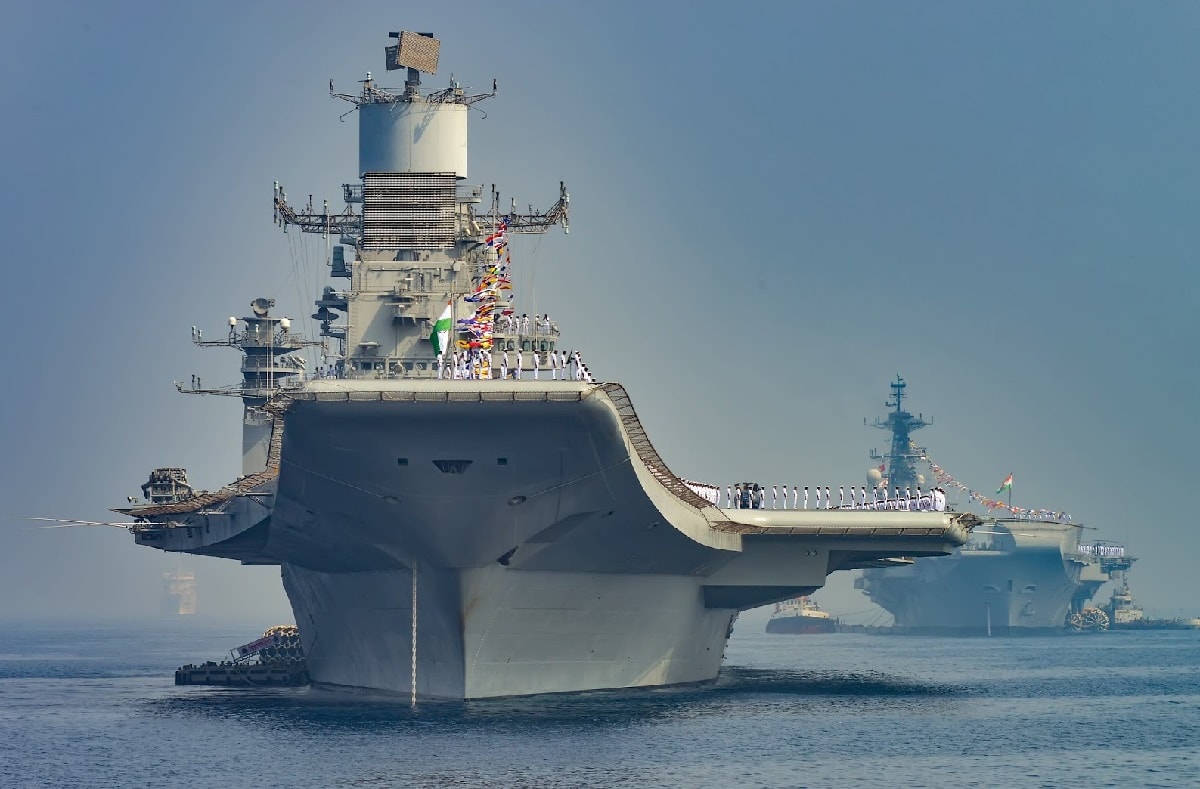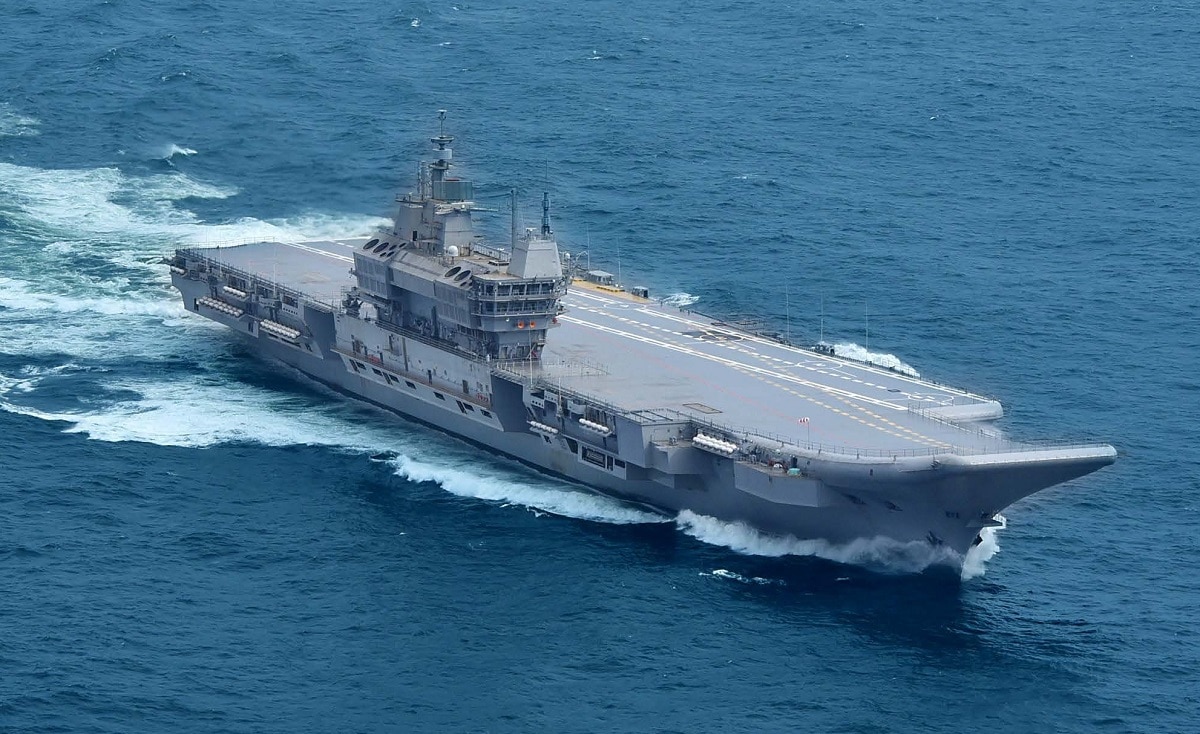Preparing an aircraft carrier for regular operations is no small feat, and this week the Indian Ministry of Defense announced that the maiden sea trials of its indigenously-built aircraft carrier INS Vikrant have progressed well, and the second phase of the trails is expected to take place by the end of this month, while the third phase is planned for December.
“Vikrant is expected to be delivered to the Navy in April and likely to be commissioned in August 2022,” an official said from the Ministry of Defense said in a statement, and added that the commissioning of the flagship carrier was set to coincide with 75 years of Indian independence.
The INS Vikrant was designed by the Directorate of Naval Design of the Indian Navy. She is the first warship to be built at the Cochin Shipyard, the largest shipbuilding and maintenance facility in India. The facility is located in the port-city of Kochi. The carrier was floated out of its dock in late December 2011, and was launched in August 2013.
More than 76 percent of the carrier’s materials, including the superstructure, were made from “indigenous content.”
Trials Continue
Vikrant completed her maiden sea trial in August, during which the warship’s performance, including hull, main propulsion, power generation and distribution and auxiliary equipment were tested. The results were extremely satisfactory and the engine showed 100% performance and some issues which had come up were being addressed, Indian officials said.
The Phase-II trials of the carrier will include a complete check of the habitat, including each of the more than 2,300 compartments.
About the Carrier
At 262 meters in length and 62 meters wide, with a displacement of 39,000 tons, she is smaller than the U.S. Navy’s nuclear-powered supercarriers or even its amphibious assault ships (LHAs). INS Vikrant also features a STOBAR (Short Take-Off But Arrested Recovery) configuration with a ski-jump. However, the warship certainly will increase the capabilities of the Indian Navy.
The carrier is capable of carrying 36 to 40 fixed-wing aircraft including 26 fighter aircraft Mikoyan MiG-29K and 10 helicopters including Kamov Ka-31, Westland Sea King, and HAL Dhruv, a utility helicopter designed and developed by the Indian company Hindustan Aeronautics Limited (HAL).
Additional armament of Vikrant consists of four Otobreda 76 mm (3 in) dual-purpose naval guns, 2×32 VLS (Vertical launching System) Barak 1 & Barak 8 surface-to-air missile launchers and Russian-made AK-630 CIWS (Close-In Weapon Systems) based on a six-barreled 30 mm rotary cannon.
The INS Vikrant is powered by four General Electric LM2500 gas turbines with two Elecon COGAG gearbox, and the carrier can reach a top speed of 28 knots (52 km/h; 32 mph) with a maximum cruising range of 8,000 nautical miles (15,000 km; 9,200 mi). When operational, the Indian Navy’s flagship will have a crew of 1,645 sailors including 196 officers within the ship’s 14 decks – including five in the superstructure. There are also separate accommodations for women officers – a first for an Indian warship of this size. Currently, 704 women serve in the Indian Navy, and they make up 6.5 percent of the total officer cadre.


Peter Suciu is a Michigan-based writer who has contributed to more than four dozen magazines, newspapers and websites. He regularly writes about military small arms, and is the author of several books on military headgear including A Gallery of Military Headdress, which is available on Amazon.com.

